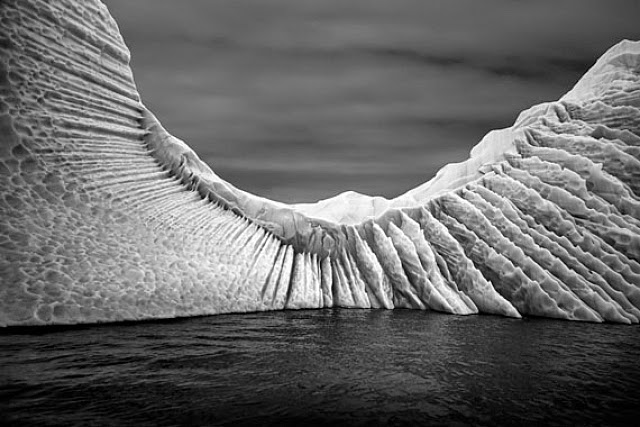Monochromed Invitations
By Tom Wachunas
“The eye should learn to listen before it
looks.” –Robert Frank
“There are always two people in every picture:
the photographer and the viewer.” –Ansel Adams
EXHIBIT: Fragile Waters: Photographs by Ansel Adams,
Ernest H. Brooks II and Dorothy Kerper Monnelly, at Massillon Museum
THROUGH SEPTEMBER 14, 121 Lincoln Way East, downtown Massillon http://www.massillonmuseum.org/fragilewaters 330-833-4061
So the first thing
you must do when entering the exhibit
– surely one of, if not the most
breathtaking I’ve ever seen at this museum - is read.
Don’t like reading stuff at an art show, you say? Kindly get over yourself, and
be open to the possibility of listening to what the words are telling you.
You’ll fare much better in hearing the 117 black and white pictures. And,
wonder of wonders, how they do speak.
In the curator’s
statement posted at the entrance to the exhibit, Jeanne Falk Adams asks us to
consider just what it is that makes the photographs by her father-in-law, the
late Ansel Adams, so compelling. At one point she quotes the late photographer, curator and
historian, John Szarkowski. He saw Ansel
Adams as a champion in the Romantic tradition who effectively caused viewers to
sense the great spaces of wilderness as he did - a “metaphor for freedom and heroic
aspirations.”
Also located at
the entrance to the exhibit is a tiny, ghostly photograph by Ansel Adams, Diamond Cascade, from Yosemite National
Park and made in 1920 when Adams was just 18 years old. Posted with the
photograph is the text of a letter he wrote to his father – a revelatory,
passionately written document wherein the young artist explains the thinking behind his composition. “…I am more than ever convinced,” Adams
wrote, “that the only possible way to
interpret the scenes hereabout is through an impressionistic vision…Even in
portraying the character and spirit of a little cascade one must rely solely upon
line and tone…”
Even at this early
stage, he was seeing abstractly. In many ways the letter is an invaluable guide
– an aesthetic template - for appreciating not only Adams’ works, but those of
Ernest H. Brooks II and Dorothy Kerper Monnelly as well. What unites all three
artists, beyond their unassailable technical mastery and clear love for the
subjects they encountered, is something a bit more challenging to articulate.
Yes, their images are compositionally resplendent marvels of light, form and textures both
serene and dramatic. And to translate such visually compelling moments from
nature into black and white, like so many symphonies of lush tonality, is
itself a stunning achievement.
More significant,
though, is an ineffable spirit, an intuitive perceiving on the part of the
artists, which invariably determines the difference between truly great
photographs such as theirs and ordinary, numbing snap-shots of pretty scenes. It’s
the difference between “taking a
picture” to be imprisoned in the frame as a static objet d’art, and making a
picture to speak and to inspire outside itself. I think the motivation for making
such pictures is far more than producing an imitation, however skilled, of what
is directly seen. It is as well a form of empathy with the beholder who might
similarly long to forever savor and protect the beheld – a heroic aspiration.
In that sense this
exhibit is much larger than the sum of its magnificent parts. More than a
powerful homage to precious, live-giving and life-sustaining water, and more
than a beautiful art collection, it’s an invitation to shared stewardship. Two
people in every picture? Certainly. Then again, we’re all in this together.
PHOTOS, from top: Winged Wall by Ernest H. Brooks II; Otter Cliffs, Dawn by Dorothy Kerper
Monnelly; Salt Hay, First Light by
Dorothy Kerper Monnelly; Winged Angel by
Ernest H. Brooks II; Snake River by
Ansel Adams





No comments:
Post a Comment